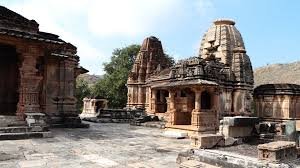Temples have been a central part of many cultures, reflecting their architectural prowess and spiritual devotion. One of the key aspects of these sacred structures is their durability. Ancient temple builders used various techniques to ensure their walls could withstand the test of time. In this article, we will explore the methods used by these master builders and how modern temple construction contractors draw from these practices.
Foundations and Material Selection
A solid foundation is crucial for any building, and temples were no exception. Builders began by selecting the best materials available, often choosing durable stones or bricks. They understood that the quality of materials directly affected the strength of the walls. For example, the use of granite and sandstone in many ancient temples provided both beauty and durability. Modern temple construction contractors continue this tradition by sourcing high-quality materials to ensure the longevity of their projects.
Advanced Construction Techniques
Ancient builders employed various techniques to enhance the strength of temple walls. One significant method was the precise cutting and fitting of stones. Each stone was carefully shaped to fit snugly with the adjacent stones, minimizing gaps and enhancing the wall’s stability. This meticulous process meant that the weight of the structure was evenly distributed, reducing the risk of collapse.
Another technique involved the use of interlocking stones or bricks. By creating shapes that fit together like puzzle pieces, builders increased the overall strength of the walls. This method also made the walls more resistant to natural forces such as earthquakes. Modern temple contractor often study these ancient techniques to incorporate similar methods in their own projects, ensuring that contemporary temples are both aesthetically pleasing and structurally sound.
Reinforcement and Maintenance
To further bolster the strength of temple walls, ancient builders sometimes used reinforcements such as metal rods or wooden beams. These reinforcements were placed strategically within the walls to provide additional support and prevent cracking or shifting. Regular maintenance was also a key aspect of preserving the temple’s integrity. Ancient texts often mention the upkeep of temples, including repairs and cleaning to prevent damage.
Today, the role of a temple contractor includes not only constructing the building but also ensuring it is maintained over time. Modern techniques may involve using reinforced concrete or steel to provide additional strength, but the principle remains the same: ensuring that the structure can endure the passage of time and environmental stresses.
The Influence of Tradition
The wisdom of ancient builders continues to influence modern construction practices. By studying historical methods and understanding the reasons behind their effectiveness, today’s temple construction contractors can create buildings that honor these traditions while incorporating modern advancements. This blend of old and new ensures that temples remain strong, functional, and beautiful.
In conclusion, the strength of temple walls can be attributed to the combination of carefully chosen materials, advanced construction techniques, and ongoing maintenance. The expertise of ancient builders serves as a valuable lesson for modern temple contractors, who strive to create structures that stand as testaments to both historical knowledge and contemporary skill. Whether through traditional methods or modern innovations, the goal remains the same: building temples that can endure for generations to come.



